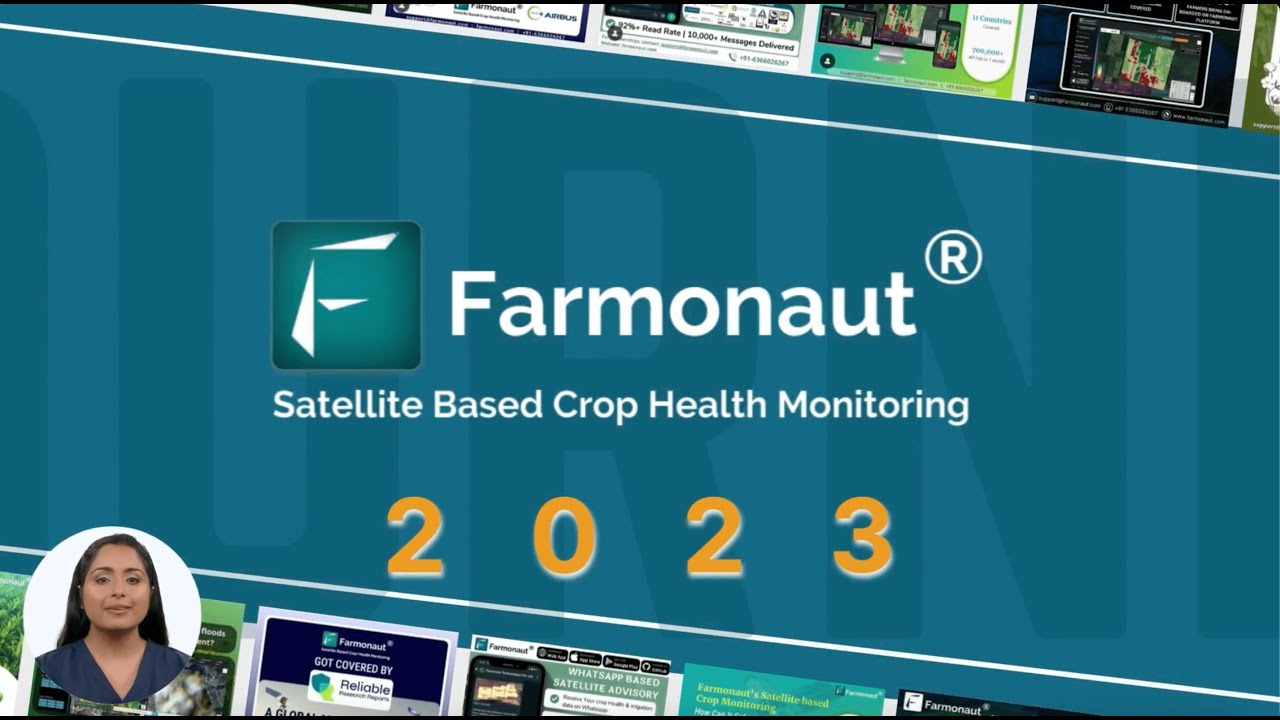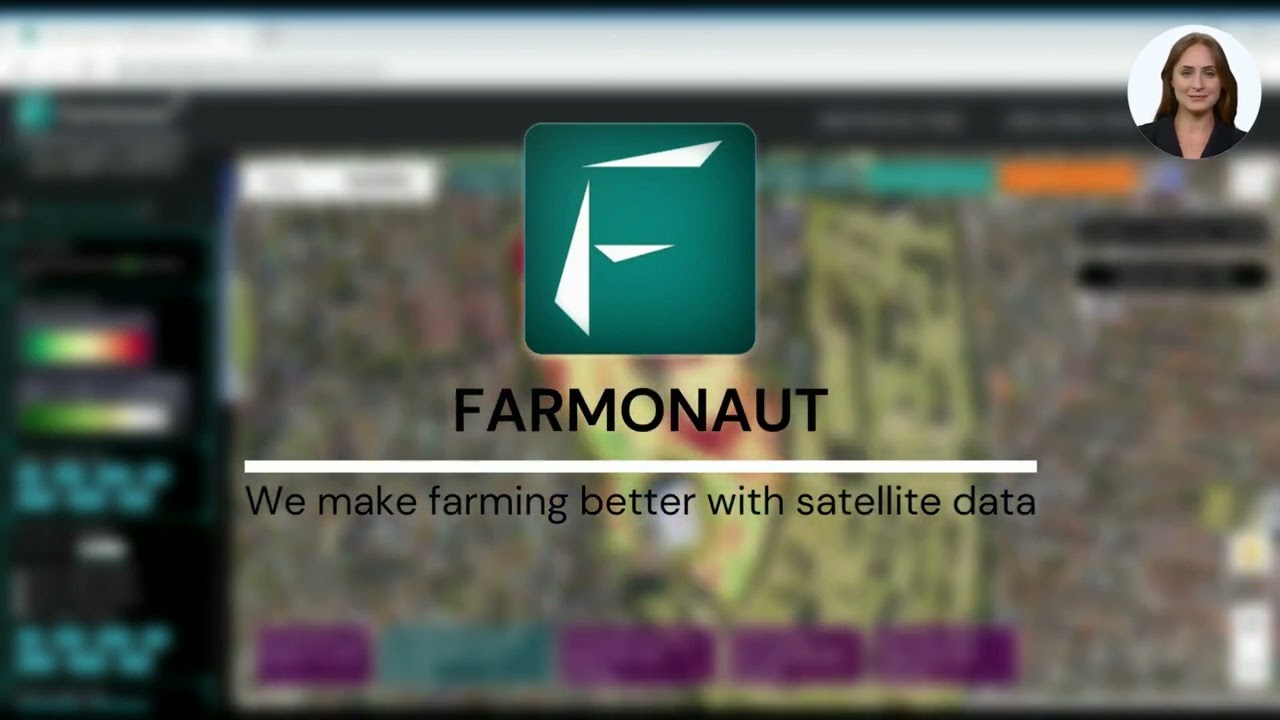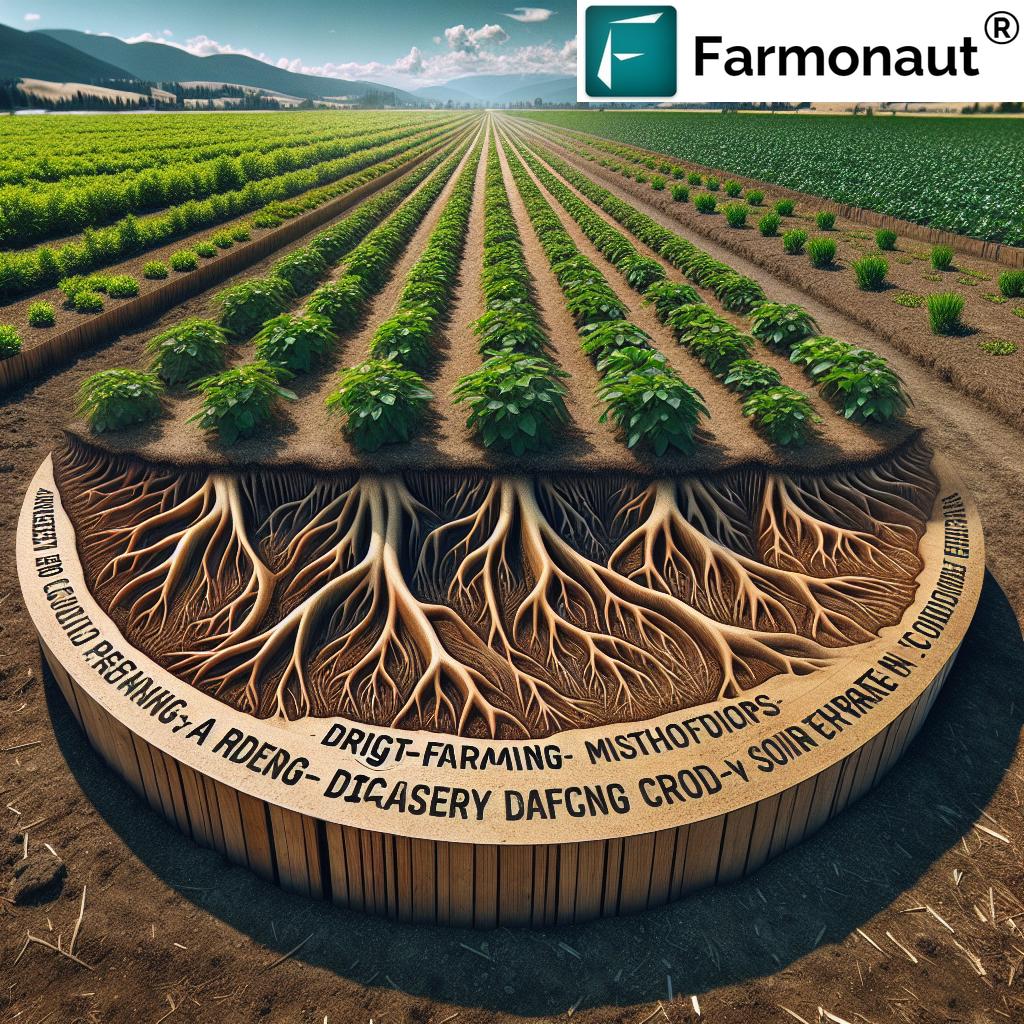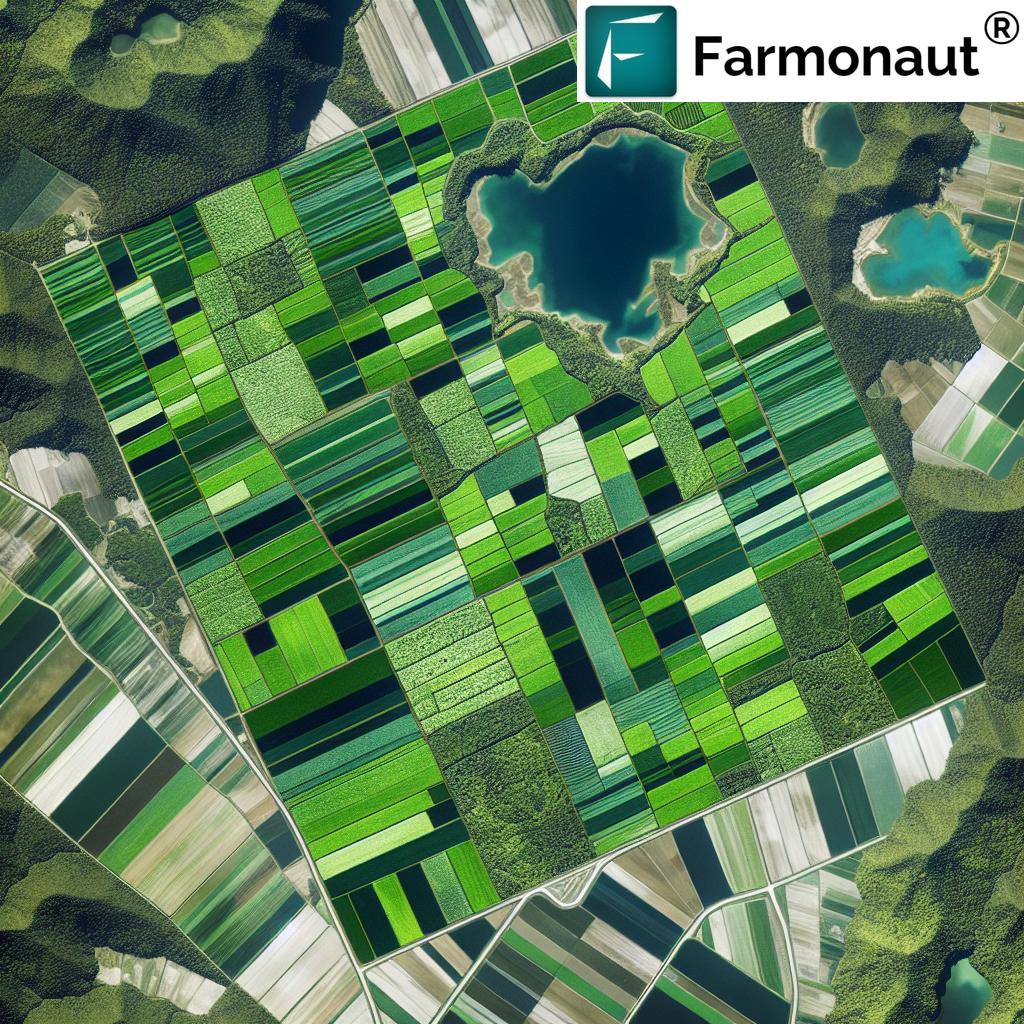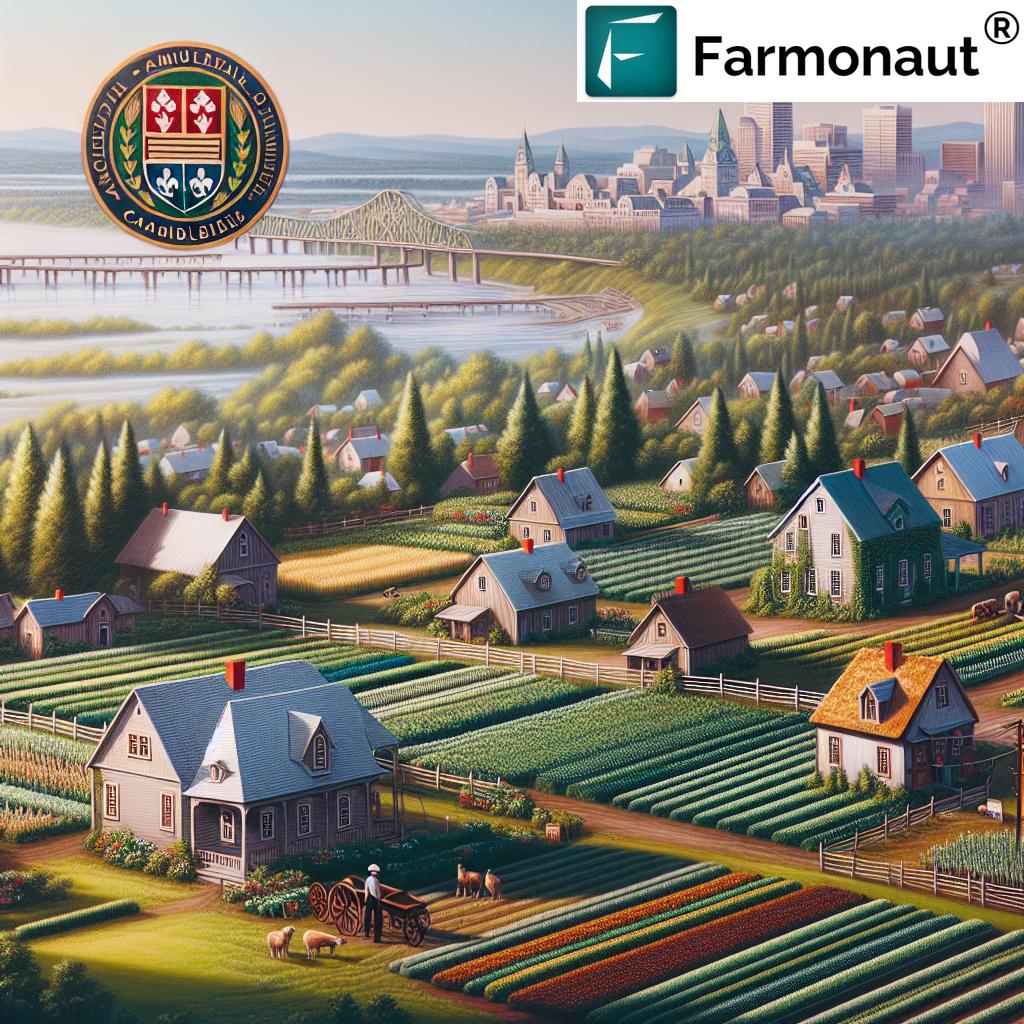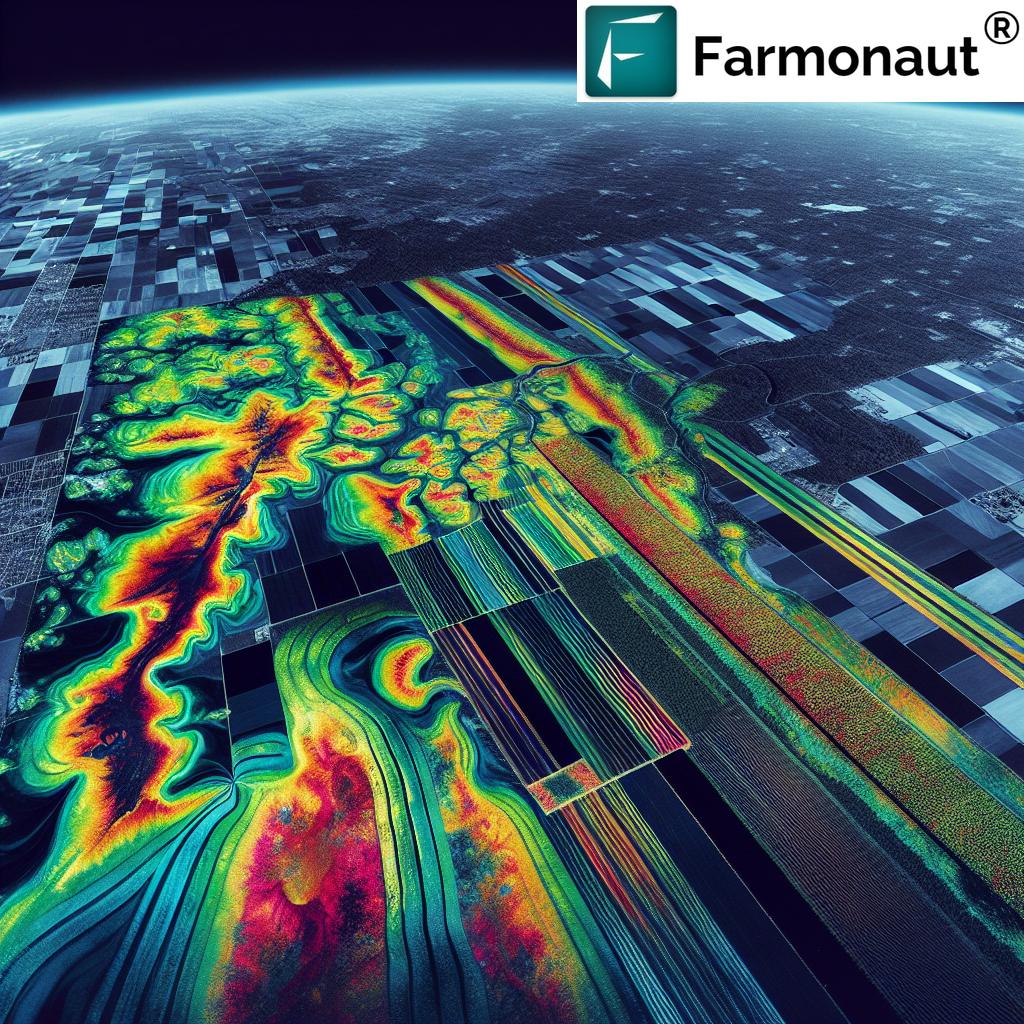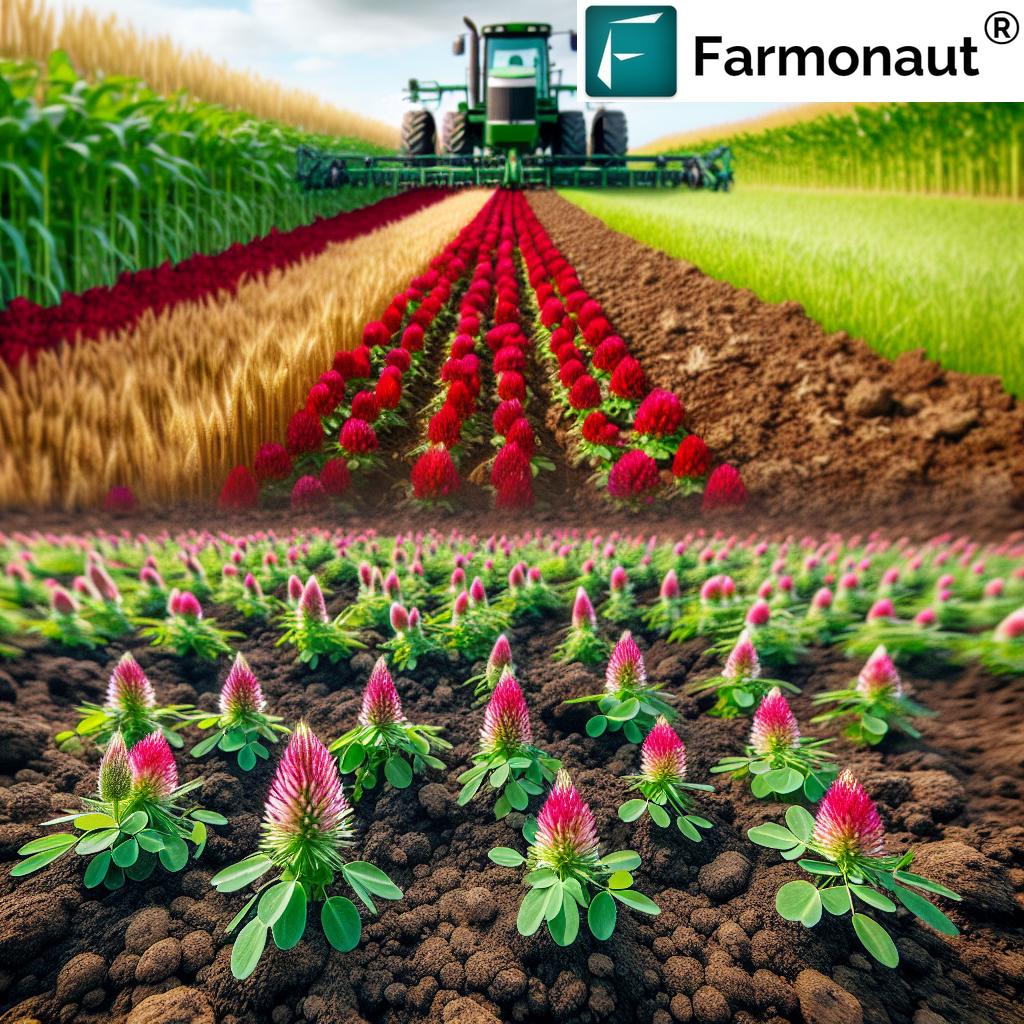Revolutionizing Greenhouse Technology: Farmonaut’s Guide to Sustainable Horticulture and Automation in Canada
“Vertical farming can produce up to 350 times more crop yield per acre than traditional farming methods.”
Welcome to Farmonaut’s comprehensive guide on revolutionizing greenhouse technology in Canada. As leaders in agricultural innovation, we’re excited to explore the cutting-edge trends and sustainable practices shaping the future of horticulture. In this blog post, we’ll delve into the world of automated greenhouse operations, innovative crop management strategies, and advanced irrigation systems that are transforming the industry.
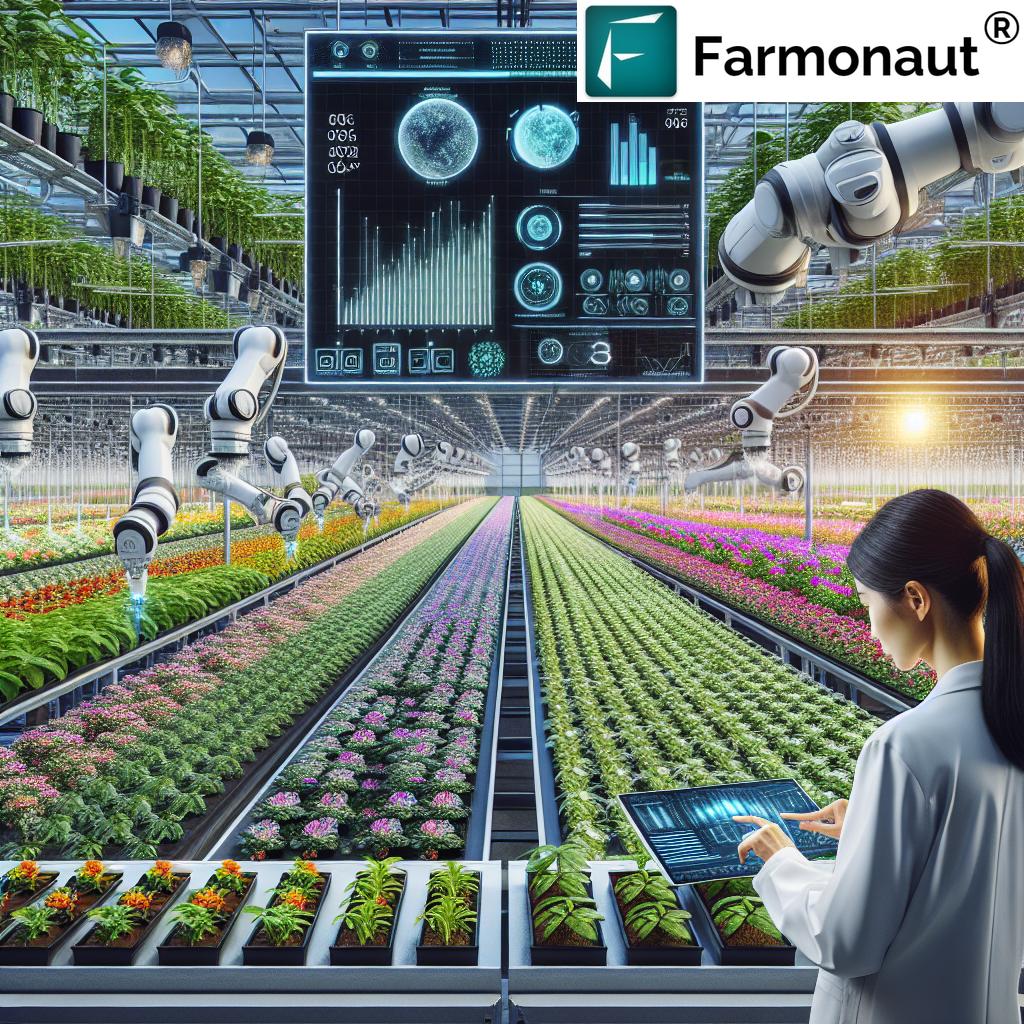
From energy-efficient greenhouses to precision agriculture techniques, we’ll explore how growers are optimizing plant growth and maximizing yields. Join us as we dive into the realms of hydroponics and vertical farming, and understand how these methods are addressing environmental challenges. We’ll also examine the impact of climate control systems on crop varieties and production efficiency.
The Rise of Sustainable Horticulture in Canada
Sustainable horticulture practices are at the forefront of Canada’s agricultural revolution. As we face increasing environmental pressures and the need for food security, innovative greenhouse technologies are paving the way for a more sustainable future.
- Energy-efficient structures: Modern greenhouses are designed with energy conservation in mind, utilizing advanced materials and smart designs to minimize heat loss and optimize natural light.
- Water management: Precision irrigation systems and water recycling technologies are reducing water consumption in greenhouse operations.
- Integrated pest management: Biological controls and innovative monitoring systems are reducing the need for chemical pesticides.
At Farmonaut, we’re committed to supporting these sustainable practices through our advanced satellite-based farm management solutions. Our platform provides real-time crop health monitoring and AI-based advisory systems, enabling growers to make data-driven decisions that promote sustainability.
Automation in Greenhouse Operations: A Game-Changer
Automation is revolutionizing greenhouse operations across Canada, addressing labor shortages and improving efficiency. Here’s how:
- Robotic harvesting: Advanced robots are being deployed to harvest delicate crops like tomatoes and peppers, increasing efficiency and reducing labor costs.
- Automated climate control: Smart systems adjust temperature, humidity, and CO2 levels in real-time, creating optimal growing conditions.
- Nutrient delivery systems: Precision fertigation systems automate the delivery of water and nutrients, ensuring plants receive exactly what they need when they need it.
Our Jeevn AI Advisory System at Farmonaut complements these automation efforts by providing personalized farm advisory tools. By analyzing satellite data and other inputs, we generate customized advice to improve farm productivity and efficiency.
Innovative Crop Management Strategies
Effective crop management is crucial for maximizing yields and maintaining plant health. Canadian greenhouse growers are adopting innovative strategies to optimize their operations:
- Vertical farming: Utilizing vertical space to increase production capacity and efficiency.
- Intercropping: Growing complementary crops together to maximize space utilization and natural pest control.
- Crop rotation: Implementing strategic rotation plans to maintain soil health and prevent pest buildup.
Farmonaut’s satellite-based crop health monitoring system supports these strategies by providing real-time insights into vegetation health (NDVI) and soil moisture levels. This data helps growers make informed decisions about crop management, ultimately optimizing yields and reducing resource wastage.

Advanced Irrigation Systems: Precision Water Management
Water conservation is a critical aspect of sustainable greenhouse operations. Advanced irrigation systems are helping Canadian growers achieve significant water savings:
- Drip irrigation: Delivers water directly to plant roots, minimizing evaporation and runoff.
- Sensor-based irrigation: Uses soil moisture sensors to trigger irrigation only when necessary.
- Recirculating systems: Collects, treats, and reuses irrigation water, reducing overall water consumption.
Farmonaut’s platform integrates with these systems by providing accurate soil moisture data from satellite imagery. This information helps growers fine-tune their irrigation schedules and avoid over or under-watering.
“Advanced greenhouse technologies can reduce water usage by up to 90% compared to conventional outdoor agriculture.”
Energy-Efficient Greenhouses: Sustainable Design and Technology
Energy efficiency is a top priority for greenhouse operators in Canada. Innovative design and technology are making greenhouses more sustainable than ever:
- Double-layer polyethylene coverings: Provides excellent insulation while allowing optimal light transmission.
- LED grow lights: Energy-efficient lighting systems that can be tailored to specific crop needs.
- Heat storage systems: Captures excess heat during the day for use at night, reducing overall energy consumption.
- Alternative energy sources: Integration of solar panels, wind turbines, and geothermal systems to power greenhouse operations.
At Farmonaut, we recognize the importance of energy efficiency in greenhouse operations. Our carbon footprinting feature helps agribusinesses monitor and reduce their environmental impact by providing real-time data on emissions.
Hydroponics and Vertical Farming: The Future of Urban Agriculture
Hydroponics and vertical farming are revolutionizing urban agriculture in Canada, offering solutions to land scarcity and the need for year-round production:
- Space efficiency: Vertical systems can produce more crops per square foot than traditional farming methods.
- Water conservation: Hydroponic systems use up to 90% less water than conventional agriculture.
- Year-round production: Controlled environments allow for consistent crop production regardless of outdoor conditions.
- Reduced transportation costs: Urban farms can supply fresh produce directly to local markets, reducing food miles.
Farmonaut’s technology supports hydroponic and vertical farming operations by providing precise data on plant health and growth rates. Our AI-driven insights help growers optimize nutrient solutions and environmental conditions for maximum yield.
Precision Agriculture Techniques in Greenhouse Horticulture
Precision agriculture is transforming greenhouse horticulture in Canada, enabling growers to fine-tune their operations for optimal efficiency:
- IoT sensors: Network of sensors monitoring various parameters such as temperature, humidity, and CO2 levels.
- Data analytics: Advanced software analyzing sensor data to provide actionable insights.
- Variable rate technology: Precision application of water, fertilizers, and pest control measures based on plant needs.
- Crop modeling: Predictive models helping growers optimize crop cycles and resource allocation.
Farmonaut’s platform complements these precision agriculture techniques by providing satellite-based insights and AI-driven recommendations. Our technology helps growers make data-driven decisions, improving overall farm productivity and sustainability.
Climate Control Systems: Optimizing Growth Conditions
Advanced climate control systems are essential for creating ideal growing conditions in Canadian greenhouses:
- Intelligent ventilation: Automated systems that adjust airflow based on temperature, humidity, and CO2 levels.
- Supplemental CO2: Controlled injection of CO2 to enhance photosynthesis and boost crop yields.
- Thermal screens: Retractable screens that help regulate temperature and light levels.
- Fog systems: Fine mist systems for humidity control and cooling.
Farmonaut’s real-time monitoring capabilities integrate seamlessly with these climate control systems, providing growers with comprehensive data on environmental conditions and their impact on crop health.
Innovative Marketing Strategies for Greenhouse Produce
As greenhouse technology advances, so do the marketing strategies for selling the produce:
- “Ugly” produce campaigns: Promoting imperfect fruits and vegetables to reduce waste and appeal to eco-conscious consumers.
- Blockchain traceability: Using blockchain technology to provide transparent information about the product’s journey from greenhouse to consumer.
- Virtual greenhouse tours: Offering consumers a behind-the-scenes look at high-tech growing operations.
- Subscription-based models: Providing regular deliveries of fresh greenhouse produce directly to consumers.
Farmonaut’s blockchain-based traceability solution supports these marketing efforts by ensuring transparency in supply chains. This builds consumer trust and enhances brand reputation for greenhouse operators.
The Role of Research and Development in Greenhouse Innovation
Ongoing research and development are crucial for advancing greenhouse technology in Canada:
- University partnerships: Collaboration between academic institutions and greenhouse operators to develop new technologies.
- Government-funded research: Support for innovative projects that address key challenges in the greenhouse industry.
- Industry consortiums: Pooling resources and knowledge to drive innovation across the sector.
- International knowledge exchange: Sharing best practices and technologies with global leaders in greenhouse horticulture.
At Farmonaut, we’re committed to supporting research and development efforts through our advanced data analytics and AI capabilities. Our platform provides valuable insights that can inform and accelerate innovation in the greenhouse sector.
Greenhouse Technology Comparison Matrix
| Technology/Practice | Sustainability Score (1-10) | Automation Level | Energy Efficiency (kWh/m² estimate) | Yield Improvement (% estimate) | Initial Investment ($ range) | ROI Timeline (years estimate) |
|---|---|---|---|---|---|---|
| Hydroponics | 8 | High | 250-350 | 20-30% | $100,000 – $500,000 | 3-5 |
| Vertical Farming | 9 | High | 400-600 | 200-300% | $500,000 – $2,000,000 | 5-7 |
| Precision Agriculture Systems | 9 | High | 300-400 | 15-25% | $50,000 – $200,000 | 2-4 |
| Advanced Irrigation Systems | 8 | Medium | 200-300 | 10-20% | $20,000 – $100,000 | 2-3 |
| Climate Control Technologies | 7 | High | 350-450 | 15-25% | $100,000 – $500,000 | 3-5 |
| LED Grow Lights | 8 | Medium | 150-250 | 10-20% | $50,000 – $200,000 | 2-4 |
| Automated Nutrient Management | 9 | High | 200-300 | 15-25% | $30,000 – $150,000 | 2-3 |
Future Trends in Greenhouse Technology
As we look to the future, several exciting trends are emerging in greenhouse technology:
- AI-driven crop management: Advanced algorithms optimizing every aspect of plant growth.
- Nanotechnology in agriculture: Nano-sensors and nano-fertilizers for precision plant care.
- Gene editing: Creating more resilient and productive crop varieties tailored for greenhouse environments.
- Robotics and automation: Further integration of robots for tasks like pruning, harvesting, and packaging.
- Circular economy systems: Closed-loop greenhouses that recycle all waste and maximize resource efficiency.
Farmonaut is at the forefront of these trends, continually evolving our platform to incorporate the latest advancements in agricultural technology. Our commitment to innovation ensures that growers have access to cutting-edge tools and insights to stay competitive in the rapidly changing greenhouse industry.
Challenges and Opportunities in Canadian Greenhouse Horticulture
While the future of greenhouse technology in Canada is bright, there are challenges to overcome:
- High initial costs: The substantial investment required for advanced greenhouse technologies can be a barrier for some growers.
- Energy demands: Despite improvements in efficiency, energy consumption remains a significant challenge, particularly in colder regions.
- Skilled labor shortage: As technology advances, there’s an increasing need for workers with specialized skills in greenhouse operations and technology management.
- Regulatory hurdles: Keeping up with evolving regulations related to food safety, environmental impact, and labor practices.
However, these challenges also present opportunities for innovation and growth:
- Government support: Increased funding and incentives for sustainable greenhouse technologies.
- Technological advancements: Continued improvements in energy efficiency, automation, and AI-driven systems.
- Education and training programs: Development of specialized courses to prepare the workforce for high-tech greenhouse operations.
- Collaborative initiatives: Partnerships between growers, technology providers, and researchers to address industry-wide challenges.
Farmonaut is committed to addressing these challenges and capitalizing on opportunities through our innovative platform. By providing affordable and accessible precision agriculture solutions, we’re helping growers of all sizes embrace the future of greenhouse technology.
Conclusion: Embracing the Green Revolution
The future of greenhouse technology in Canada is bright, with innovations in automation, sustainability, and precision agriculture leading the way. As we’ve explored in this guide, from advanced irrigation systems to AI-driven crop management, the possibilities for optimizing greenhouse operations are vast.
At Farmonaut, we’re proud to be at the forefront of this green revolution, providing cutting-edge satellite-based farm management solutions that empower growers to make data-driven decisions. Our platform’s real-time crop health monitoring, AI advisory systems, and blockchain-based traceability solutions are helping to shape the future of sustainable horticulture in Canada and beyond.
As we move forward, the integration of these technologies will be crucial in addressing the challenges of food security, environmental sustainability, and economic viability in the agricultural sector. By embracing these innovations, Canadian greenhouse operators can not only improve their productivity and efficiency but also play a vital role in building a more sustainable food system for future generations.
We invite you to join us on this exciting journey of agricultural innovation. Whether you’re a small-scale grower or a large agribusiness, Farmonaut’s solutions can help you optimize your operations and stay ahead in the ever-evolving world of greenhouse technology.
Ready to revolutionize your greenhouse operations? Explore Farmonaut’s advanced agricultural solutions today:
For developers looking to integrate our powerful satellite and weather data into their own systems, check out our API and API Developer Docs.
Farmonaut Subscriptions
Frequently Asked Questions
Q: What are the main benefits of implementing advanced greenhouse technologies?
A: Advanced greenhouse technologies offer numerous benefits, including increased crop yields, improved resource efficiency (water and energy), year-round production capabilities, better pest and disease management, and enhanced product quality. These technologies also contribute to more sustainable farming practices by reducing environmental impact.
Q: How does Farmonaut’s technology support greenhouse operations?
A: Farmonaut provides satellite-based farm management solutions that offer real-time crop health monitoring, AI-driven advisory systems, and data analytics. These tools help greenhouse operators make informed decisions about irrigation, fertilization, and pest management, ultimately leading to optimized plant growth and resource use.
Q: What is the ROI timeline for investing in greenhouse automation?
A: The ROI timeline for greenhouse automation can vary depending on the specific technology and scale of implementation. Generally, growers can expect to see returns within 2-5 years for most automation technologies. However, some high-impact solutions like advanced climate control systems or vertical farming setups may have longer ROI periods of 5-7 years due to higher initial investments.
Q: How can small-scale growers benefit from greenhouse technology advancements?
A: Small-scale growers can benefit from greenhouse technology advancements through scalable solutions like Farmonaut’s platform, which offers affordable access to precision agriculture tools. Additionally, modular automation systems, energy-efficient lighting, and smart irrigation controls can be implemented incrementally, allowing smaller operations to gradually upgrade their facilities and improve productivity without overwhelming initial investments.
Q: What role does AI play in modern greenhouse management?
A: AI plays a crucial role in modern greenhouse management by analyzing vast amounts of data from various sensors and systems to provide actionable insights. This includes predicting optimal harvest times, detecting early signs of pest infestations or diseases, optimizing resource allocation, and automating climate control adjustments. AI-driven systems like Farmonaut’s Jeevn AI Advisory System help growers make data-driven decisions that improve overall greenhouse efficiency and crop yields.


